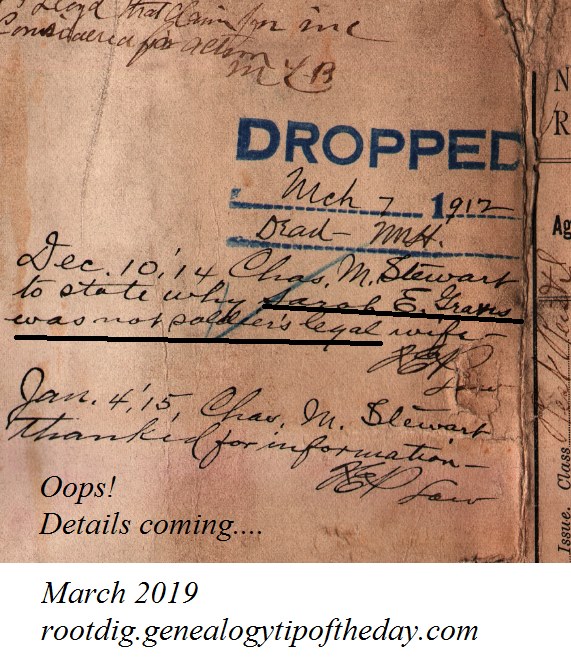A “neighbor” filed a complaint about a relative’s homestead claim in Nebraska. While he was a geographic neighbor, he also was related by marriage to the person whose homestead he contested. A man wrote the US pension office in the early 20th century providing information that a widow wasn’t legally married to the soldier. While he was not directly related, his sister-in-law was a daughter of the veteran by a previous marriage.
If someone is “complaining” about your relative in some way, shape, or form, find out what the connection is.
Even if you can’t find the connection, your search will likely lead to more information.
People don’t complain out of boredom–at least most of the time.
 Now available for immediate download!
Now available for immediate download! I recently obtained digital images of a Union Civil War pension file of a relative by marriage. It took over 200 images to digitize all the records. My interest in the file was to see if there was information on the claim of the widow and what information she had provided on herself. Having seen quite a few pension files, I knew where to look for the “good stuff.” There should be documents with “WIdow’s Declaration” or similar phrases at the top in large black letters.
I recently obtained digital images of a Union Civil War pension file of a relative by marriage. It took over 200 images to digitize all the records. My interest in the file was to see if there was information on the claim of the widow and what information she had provided on herself. Having seen quite a few pension files, I knew where to look for the “good stuff.” There should be documents with “WIdow’s Declaration” or similar phrases at the top in large black letters.